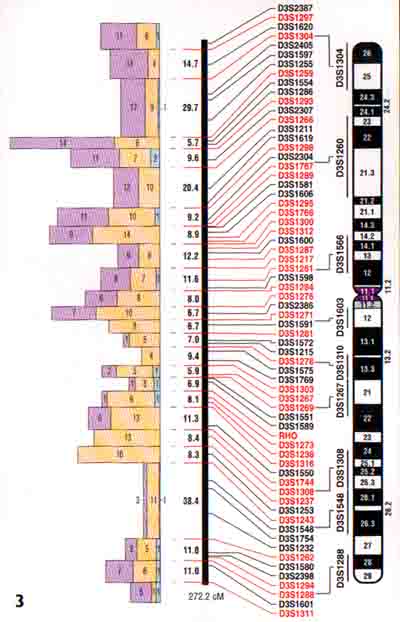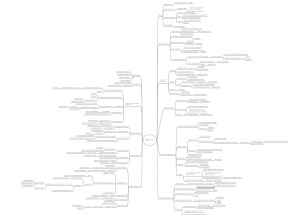This article made a few very significant points–and it was nice to see a newspaper defend our generations ability to compose. With modern technology and popular culture–from Facebook to wikis all the way to text messaging, scholars and students alike can no longer ignore the changing nature of the English language. While the mediums most prevalent in our daily lives often disregard the proper use of grammar and spelling, on the other hand, the multitude of these mediums enhance an individual’s ability to adjust to different audiences. Yes, we could care less if we spell words right when we talk to our friends via Facebook or AIM, but I, like many other students my age, know the difference between your and you’re or a fragment and a complete sentence. As this article notes, to use such habits as a generalization our inability to understand the English language is both unfair and unfounded. In fact, the essential nature of such informal writing instills efficiency. More importantly, now more than ever, students possess the ability to reach a real audience as the process of teaching composition moves beyond the student-teacher relationship. Finally, our writing has a purpose greater than boosting our GPA. Ultimately, the article recognizes the idea of the ever-changing English language, an idea we experience in our daily lives online and in the classroom. Through this, the article directly relates to our class not only with regards to the nature of modern composition but also with the relationship between words and images as another equally significant movement in the evolution of our language. In the end, composing relies on understanding of its multiple contexts, audiences and means of expression.
November 12, 2008
November 7, 2008
“Bootiful”-Project 3
Beauty is skin deep—or so they say. Rather, as this photograph by John Rankin suggests, superficiality and artificial alterations define the modern sense of beauty. Entitled “Bootiful,” the image represents the fallacy of perfection that society faces daily, not only a signature characteristic of magazines but now entering the realm of school photographs as well. In the visual portrayal of the harsh criticism of the boy’s facial qualities, the image highlights such imperfections in a way that demonstrates the ridiculous nature of the process. The comparison of the before and after photographs calls the viewers attention to the false impression of perfection and beauty as seen on the right. In essence, the touched-up photograph falls short to the magnitude of the message of the photograph on the left, crucial to the viewers understanding. The idea of removing all blemishes to create beauty creates standards impossible to surpass, or even meet, in an individual’s daily life, which as an extension impedes the ability of an individual, particularly in adolescence, an age captured by the subject of the image, to feel beautiful and therefore confident. Through this, the artist ultimately inspires the viewer to crush the false standard of beauty and perfection.
October 8, 2008
Kimberly’s Interview: Mirrors
History of Mirrors:
- First mirrors early 6,000 BC
- First made from polished stone or metal
- Italians first to make mirrors with glass in combination with metal
- Improvements continued throughout history
Purpose & Applications:
- Reflect what can’t naturally be seen (can’t see ourselves): vanity
- Art: self portraits
- Literature: Alice Through the Looking Glass
Other, more advanced applications:
- Lasers
- Telescopes
- Two Way mirrors (Police and Reality TV)
- Driving (rear-view)
- WWII: Acoustic Mirrors (primitive radar- detected enemy aircraft by reflecting sound)
Depending on construction, mirrors can reflect more than just visible light. Other uses:
- Infrared light (therefore can be used for heating)
- Sunlight/heat (village in valley that doesn’t get sun for 7 weeks in the summer uses a large mirror)
Social/ Superstitious Implications of Mirrors (don’t worry, she doesn’t believe this):
- Believed to reflect soul by showing truth (why fictional figures like vampires can’t be seen)
- Breaking a mirror = breaking ones soul, therefore 7 years bad luck because 7 years needed to create new soul
- Soul trapped in mirrors after death (why it is a tradition for some to cover mirrors after death of someone)
- idea of reflecting truth
Project 2
Beyond the Double Helix: A new perspective of DNA
The Human Genome Project extends human vision beyond traditional genetics with its applications towards the understanding of what it means to be human. Through the discovery of the human DNA sequence, mankind achieved a new worldly perspective as a new means of expression evolved, transforming approaches to medicine and the theory of evolution while promoting compassion by expressing the idea of a global family from a genetic standpoint.
My Mind Map
I didn’t know how to capture this image or save it in a way that the contents were visible. Sorry 😦
October 6, 2008
Mind-mapping
Almost everyone has mind-mapped before, whether or not the process was defined as mind-mapping. Since elementary school, we have learned to diagram our ideas and concepts, based on importance, around a central idea or concept, often connecting ideas through multiple branches. Unlike other forms of brainstorming, mind-mapping allows for greater freedom and helps visualize the overall concept. Here is an example of a basic mind map followed by a more intricate one:
Up until now, mind-mapping was limited to pen and paper. Online, however, I found several different softwares and applications for electronic mind-mapping.
This wikipedia article lists free and proprietary software: http://en.wikipedia.org/wiki/List_of_mind_mapping_software
I found these two free applications on the web:
September 29, 2008
Tag Cloud
September 24, 2008
Global Warming (?)
A.
A. UBike, a GreenU initiative, demonstrates the trend for people and universities (like U. of Miami) to resort to alternate forms of transportation. The bikes are cheap, resources are accessible, and the only thing burned is calories!
B. Multiple plastic companies have also followed the “eco-friendly” trend and created water bottles that use 30% less plastic. By moving in this direction, these companies demonstrate the growing demand for environmental friendly products–a result of increased awareness of global warming. Recycling bins and facilities have also become (for the most part) more accessible.
C. Hand driers are now more common than paper towel dispensers. Even if this is just means of sanitary, the purpose of products like “World Dryer” is also to reduce the need for paper towels, which require cutting down trees and add to the demand for paper products, and, as a result, deforestation (one of the causes of Global Warming). So, their growing popularity signifies cleaner sanitation and more importantly efforts to reduce global warming one baby step at a time (or set of wet hands).
D. Reduce, reuse, recycle! An idea that has a strong presence in popular culture, its implementation often applies to art and “nick-nacks” like pictured abobe, illustrating environmental awareness and innovation! (if only such attributes were applied on a larger scale).
September 12, 2008
Sternfeld
“When you take someones life you forfeit your own”
For me, it is impossible to look at this photograph without coming back to this line. These words, painted across the obsolete brick walls of a run-down building, draw the viewer in and establish themselves as the focal point of the photograph. They speak of tragedy, of violence and of death.
Then, naturally, the eye travels to the painting on the wall in the lower right hand corner. The blood red stands out as the most striking display of color throughout the entire photograph. With the color’s parallel with blood, the portrait further instills evidence of tragedy. Even more, as a result of the muralist’s perspective, the portrayal of the unknown man appears “saint-like,” referencing again the pt of death and introducing the concept of innocence.
In my opinion, these two regions represent the main ideas of the photograph–violence and death. They also demonstrate the interdependent relationship of words with images. Without these words, the viewer would not be able to understand the greater message of the picture. While tragedy is evident–the blood red, saint-like portrait, and baskets of flowers that litter the sidewalk–Sternfeld also explores the emotions that regard those who commit the crimes. He effectively employs the horizontal composition which forces the eye to travel in a circle. The viewer has to closely examine the photograph to notice certain details which they would otherwise overlook upon first glance. For instance, details such as “Guilty…Life in prison” and “Do the right thing” add dimension to the photograph even as minor details.
At the same time, Sternfeld’s point of view adds further meaning to the picture. By taking the photograph in a style which mirrors that of photographers from the FSA (see below). The photograph is meant to be factual and straightforward; yet the emotion is impossible (as it nearly always is) to escape. Demonstrating suffering the the landscape, the building holds the emotion of the original tragedy. The message the photograph sends regards the perpetual nature of tragedy–it will always exist. Capturing the still image makes the scene appear to be trapped in time, locked into the sadness of the incident that occurred. However, at the same time, the photograph portrays a building with some flowers on the ground and some paintings on the walls, but there are no people around. The landscape and the coinciding phrases portray the emotion, not people. So, in the end, the photograph makes a strong statement: yes, there will be tragedy, but remember, life goes on.

- Dorothea Lange photographed for the Farm Security Administration (FSA), a New Deal program designed to document the Dust Bowl and the Great Depression while helping farmers.











